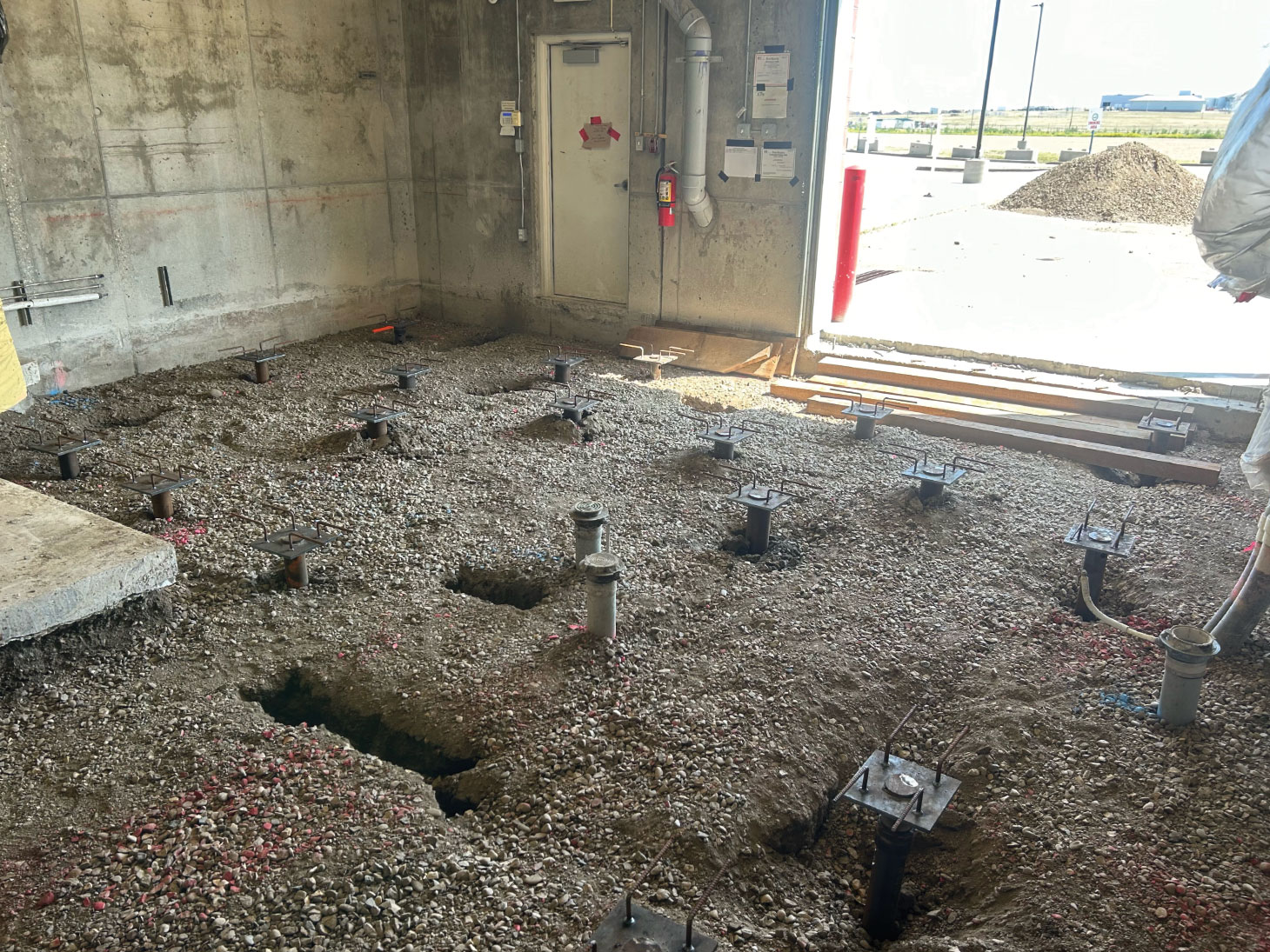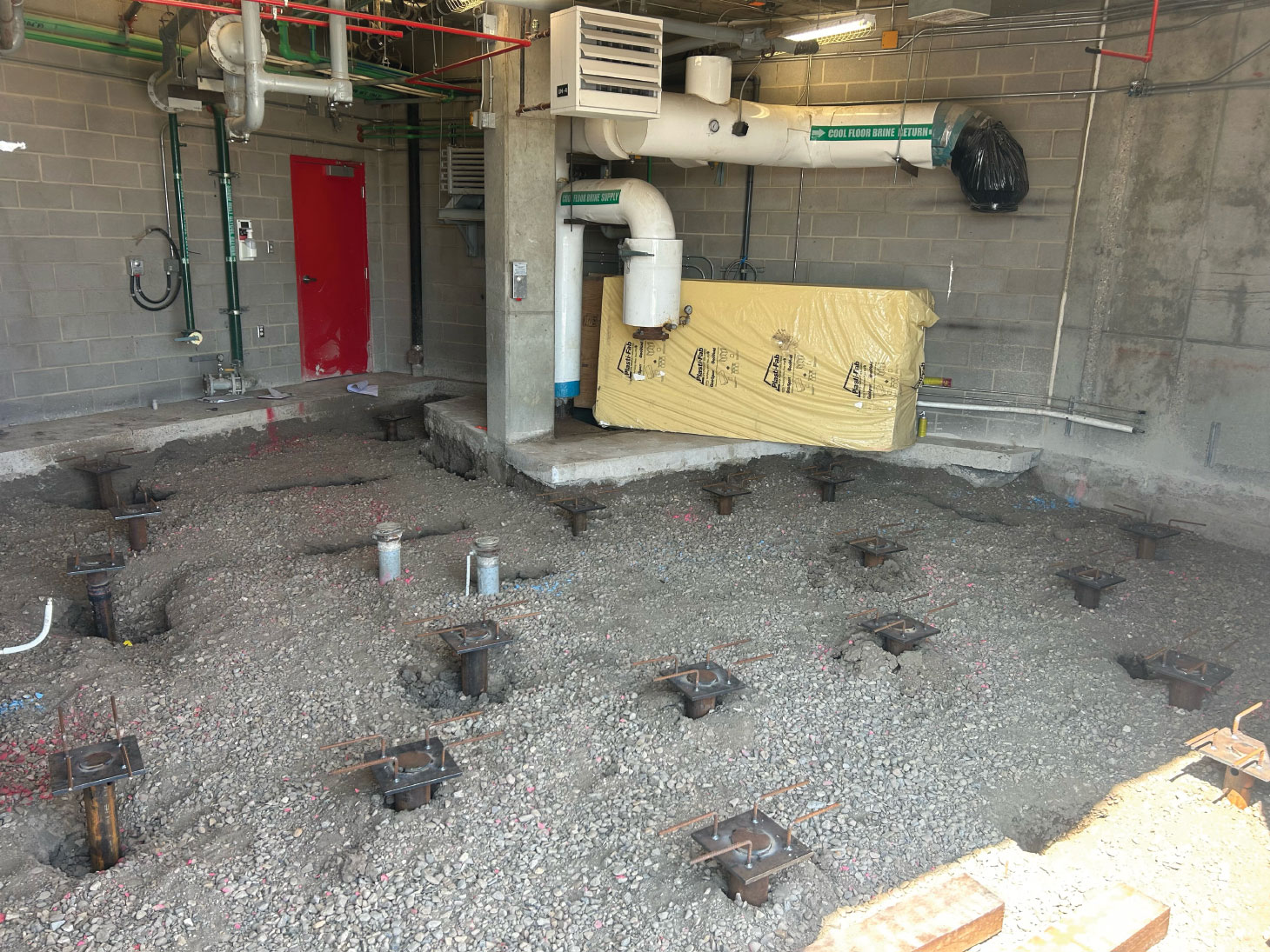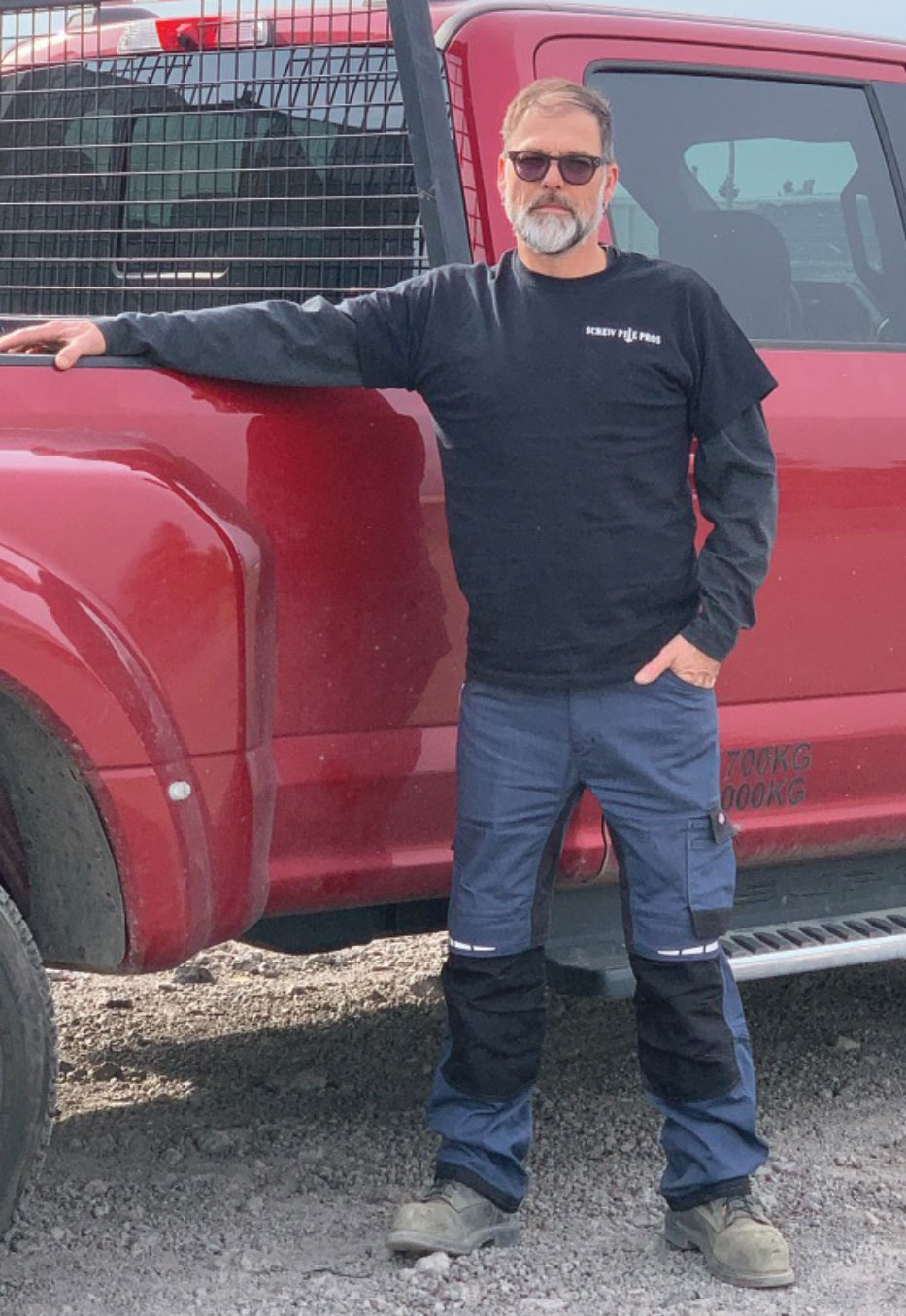
Edmonton Screw Pile Pros have added another project to their extensive experience in the installation of engineered helical piles.
The Centennial Arena in Brooks, Alta., was constructed in 2010 – a 74,000-square-foot multi-purpose facility that seats 1,704 people along with a running track, concessions and an NHL-size ice surface (200 by 85 feet). Massive ice-making machinery was installed to maintain the frozen surface of the rink, but 12 years into operation it became apparent that the vibration of that equipment was destroying the supporting concrete floor.
All the equipment in the arena ice-making room was removed and the crumbling concrete floor broken up and hauled away – a big undertaking on its own. To prevent the same damage from happening again, Pharaoh Engineering of Medicine Hat, Alta., developed an engineering design that would use helical piles to absorb the vibrations and help support the new floor.
That’s where Edmonton Screw Pile Pros came in to provide certified helical pile installation according to the engineered foundation design.
“In this project, they wanted piles all along the perimeter and then in the centre,” said Edmonton Screw Pile Pros president Mat Bergevin. “This gave us challenges because there were electrical systems present underground, as well as some drainage structures. That meant we had to cancel several piles in the design and use larger diameter piles where the ice-making equipment would be sitting.”

The one-man crew – Bergevin – installed a total of 20 helical piles. Twelve 3.5-inch-diameter by eight-feet-long piles were placed around the perimetre: eight to a depth of eight feet and the remaining four piles welded to an extension for a final depth of 16 feet. In the centre area that would be beneath the ice-making equipment, Bergevin put down eight 4.5-inch-diameter piles to a depth of eight feet.
According to the engineer’s design, these larger diameter piles would better absorb the vibration of the equipment and take the stress off the concrete floor.
”We’ve been in business in Alberta for seven years now, but this was the first time working indoors in pretty close quarters,” said Bergevin. “Luckily they had opened the big garage door on one side to remove all the equipment and concrete earlier so the exhaust from our equipment was evacuated right away. And it was pretty nice to be able to be in the shade with good air movement because at that time in June, it was super hot in Brooks.”
“We’ve been in business in Edmonton for seven years now, but this was the first time working indoors in pretty close quarters.”
– Mat Bergevin, Edmonton Screw Pile Pros
All Bergevin had to do to get the dedicated helical screw pile installation machine onto the stepped down floor area was to build a ramp using pieces of four by six lumber.
“The only real challenge was that we had to get piles made into smaller lengths in order to negotiate all the obstacles above. Even though the ceiling was 20 feet high, we had to be mindful of pipes and fixtures hanging down everywhere and be careful not to cause any damages. That meant we had to use piles at five and eight feet lengths, and weld them together in order not to break anything and be able to install them properly,” he said.
Helical piles are hollow and can be filled with concrete for more strength once they are installed, but in this project in the foundation floor of the Centennial Arena, the engineer felt it was very important not to have concrete inside because of the effects of vibration.
“As it was, the piles were there more to prevent vibration rather than give support,” said Bergevin. “But because we didn’t have the room to weld on the pile cap from underneath, in the shop we cut a hole in the cap so we could weld it on from the top, and then saved that cutout to weld it back on and cover the hole once the pile was installed.”

The screw pile machine is fitted with rotary hydraulic equipment that measures the appropriate torque needed to turn the screw throughout installation.
“The oil pressure on the equipment is converted into torque,” said Bergevin. “That’s how we can tell the load capacity of each pile. In this job we had no issues with the ground below and no indication of water underneath so it all went very well.”
At the end of two hot days in June, Bergevin’s part of the restoration job was completed: 20 piles in total installed, extensions where needed, everything levelled and the pile caps welded on. The next phase would be pouring the new concrete floor and reinstalling the ice-making equipment, all ready in time for the next big game on the ice.
PHOTOS: COURTESY OF EDMONTON SCREW PILE PROS